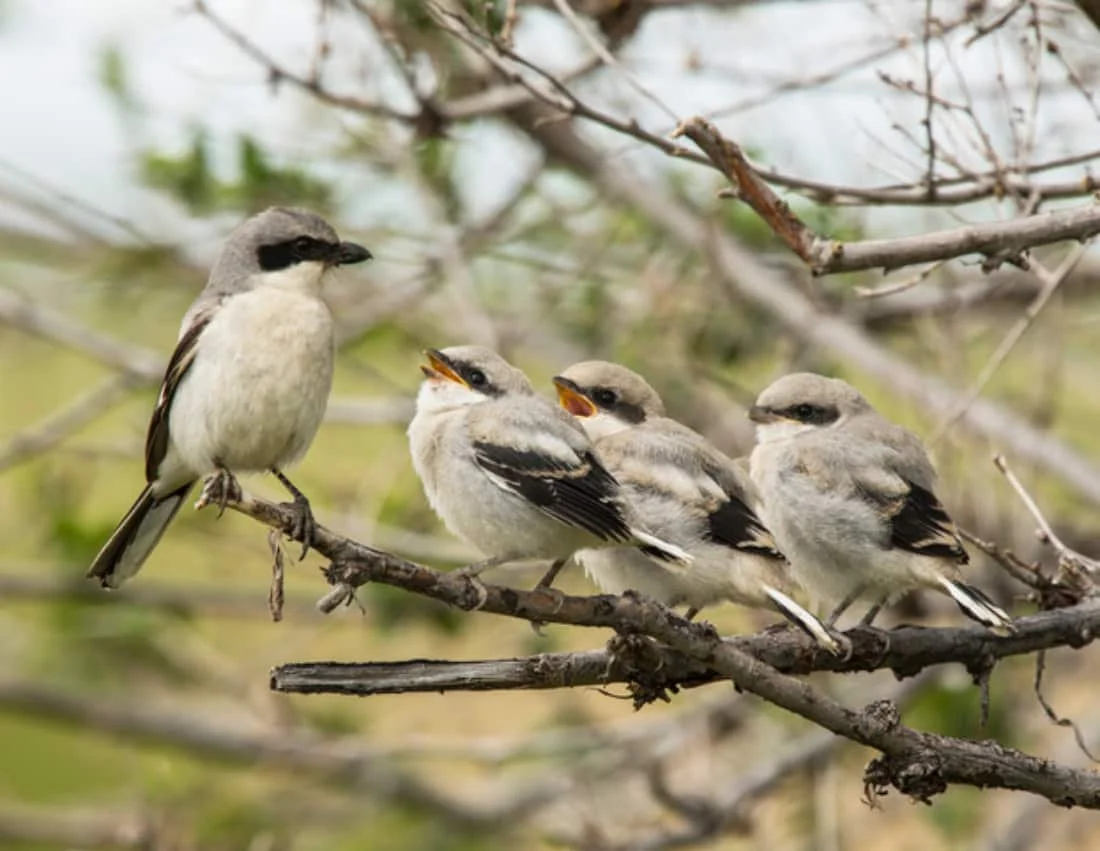Busy times for the Butcherbird!
What is that raucous calling in the bushes? It may be a nest full of hungry Loggerhead Shrikes (a.k.a Butcherbirds)! While most chicks can be quite noisy at feeding time, these birds named for their shrieking call can take it to another level.
These migratory songbirds are a threatened species and Saskatchewan is an important part of their breeding range. They return to the Canadian prairies each spring from their wintering grounds in southern Texas and Mexico; and right now, their chicks are hatching and starting to leave the nest!
“Now is the best time to see Loggerhead Shrikes because the adults are constantly on the hunt to feed their ravenous chicks, and the chicks are getting brave to hop out of the nest to surrounding branches”, explains Rachel Ward, Habitat Stewardship Coordinator with Nature Saskatchewan. “They can frequently be seen sitting on a dead branch up high in a shrub as they are a sit-and-wait predator and will perch on a high vantage point before swooping down to grab prey”.
Loggerhead Shrikes are predatory songbirds and provide excellent natural pest control. In addition to their main diet of insects, they will also eat mice, voles, frogs and even snakes. These tenacious birds will even attack and carry prey up to 129% of their own body weight! Unlike other birds of prey, shrikes do not possess the strong feet and talons necessary to hold their prey down and tear off pieces. To get around this, shrikes impale their prey on thorns or barbed-wire, and then use their hooked beak to tear off edible bits. “This adaptation of hanging up their prey is how they got the nickname Butcherbird,” says Rachel.
Loggerhead Shrikes are slightly smaller than a robin, with a white breast and belly, a grey back, and contrasting white markings on their black wings and tail. They also have a distinctive bold black eye “mask” and a black hooked beak. Loggerhead shrikes have a song composed of short bubbling trills, as well as a variety of rasps and clacks. However, the call they are best known for is the distinctive high pitched shriek they give when alarmed.
Nature Saskatchewan delivers a voluntary stewardship program called Shrubs for Shrikes that works with rural landowners to conserve this species at risk. They are asking anyone who sees a Loggerhead Shrike, or impaled prey, to call their toll free line at 1-800-667-4668 to help them monitor the population. “Personal information is never shared without permission”, adds Rachel.
Loggerhead Shrike (photo credit: Ashley Vass)
Adult Loggerhead Shrike and fledglings (photo credit: Boyd Coburn)


